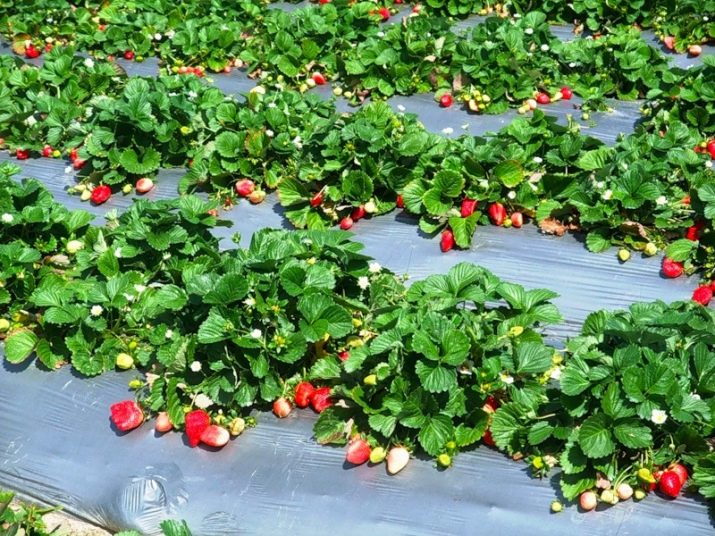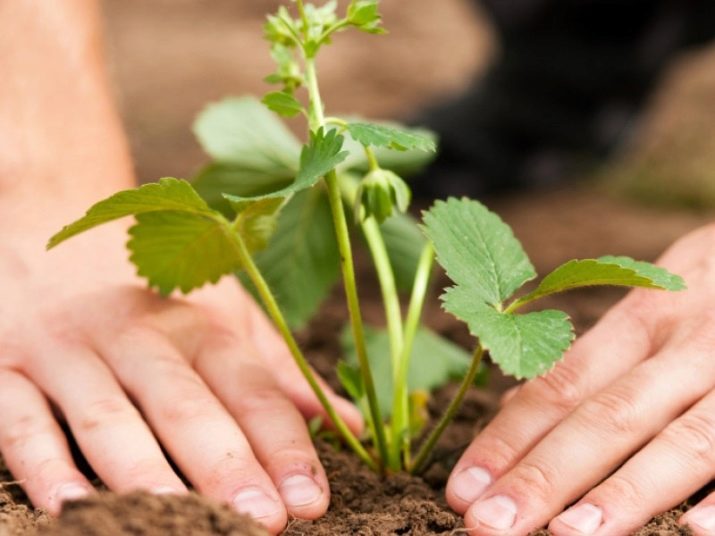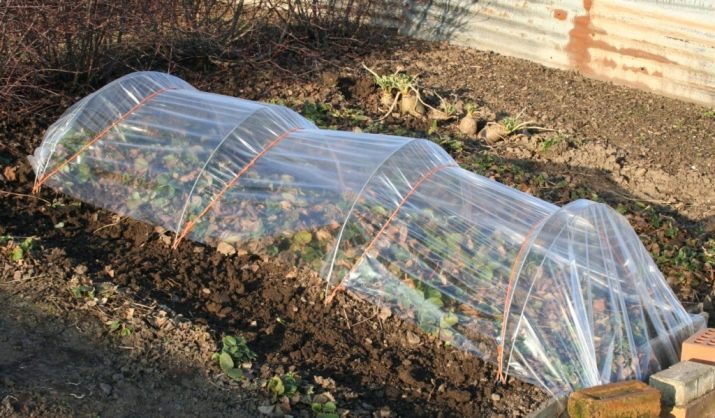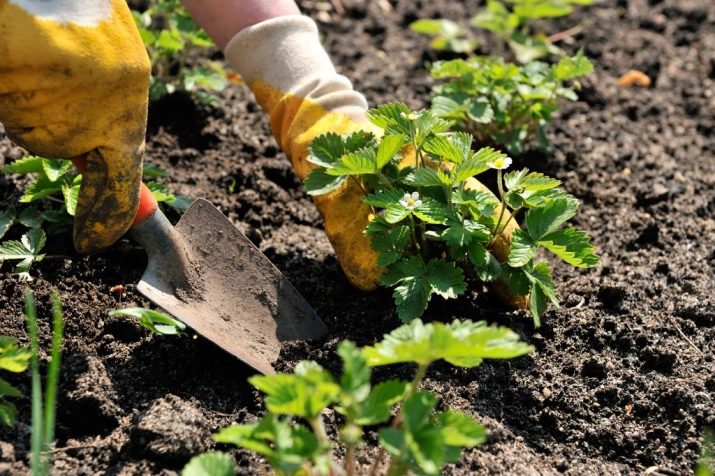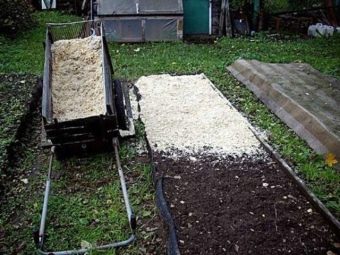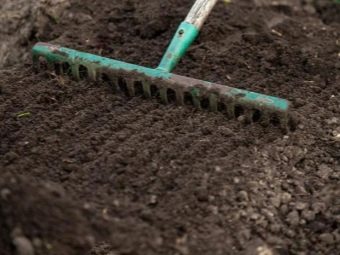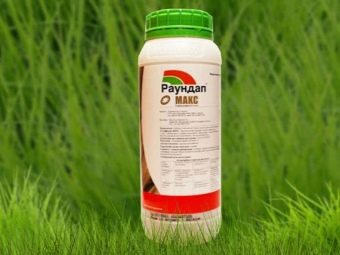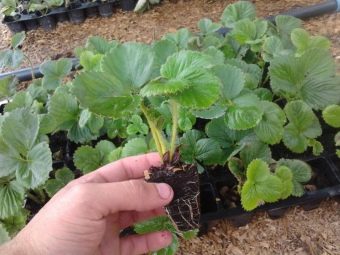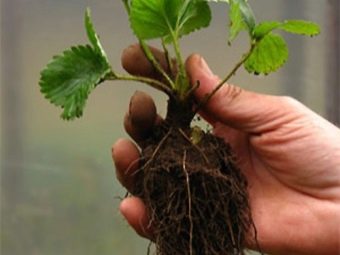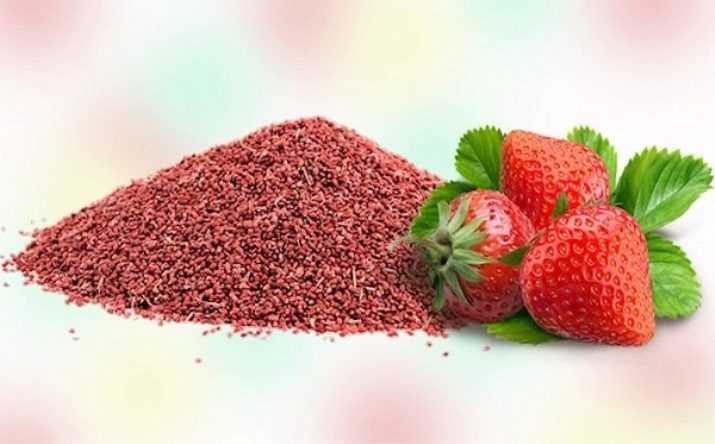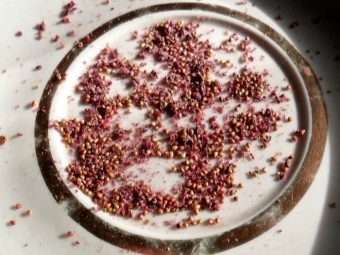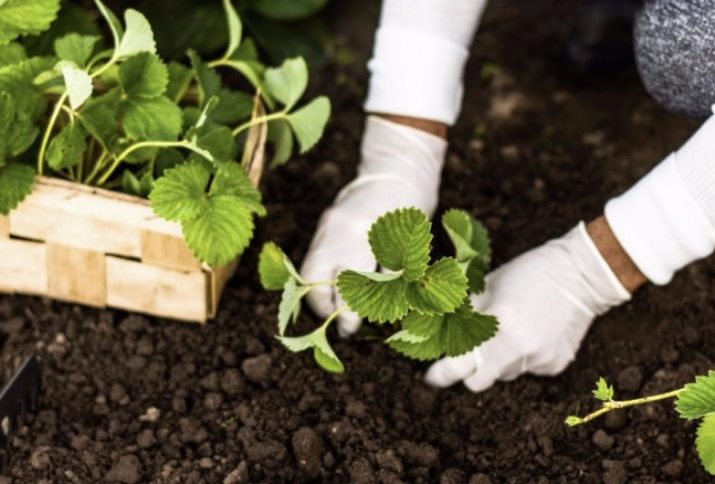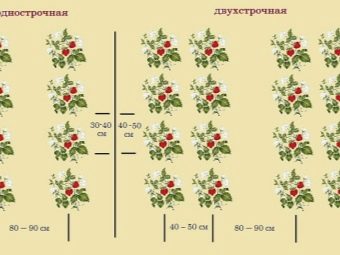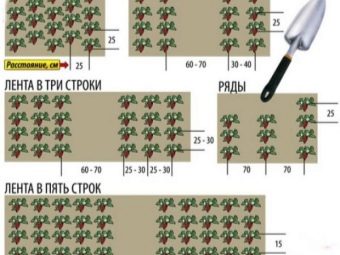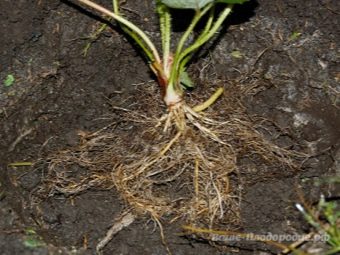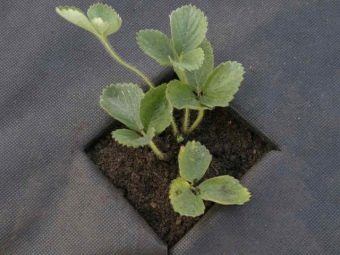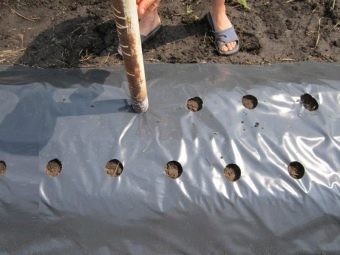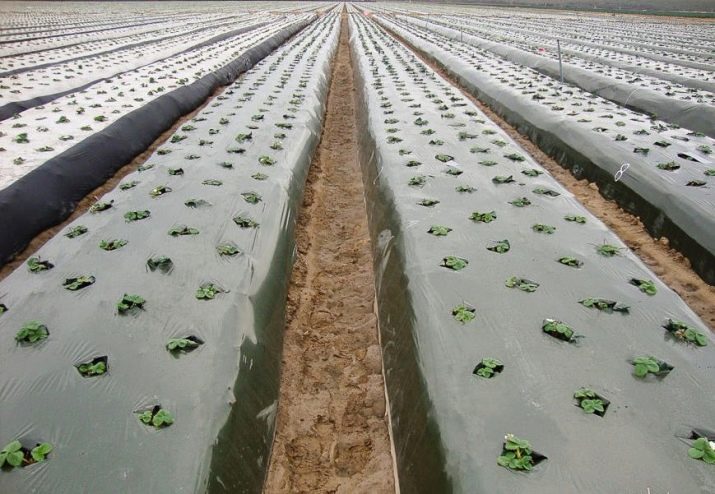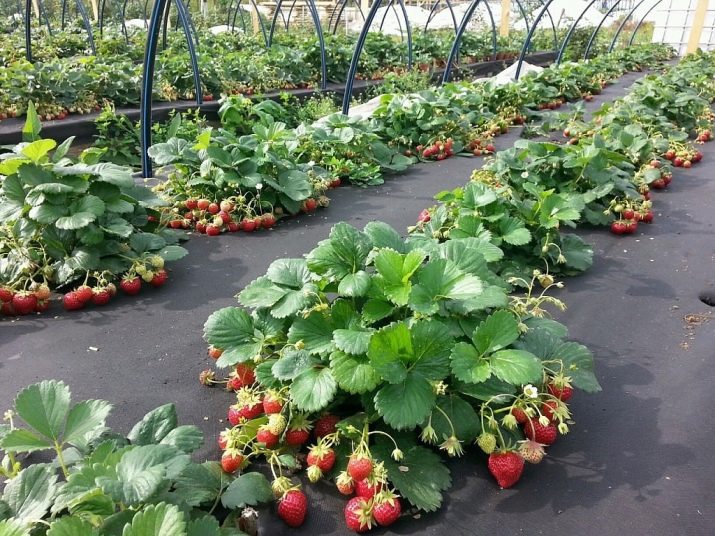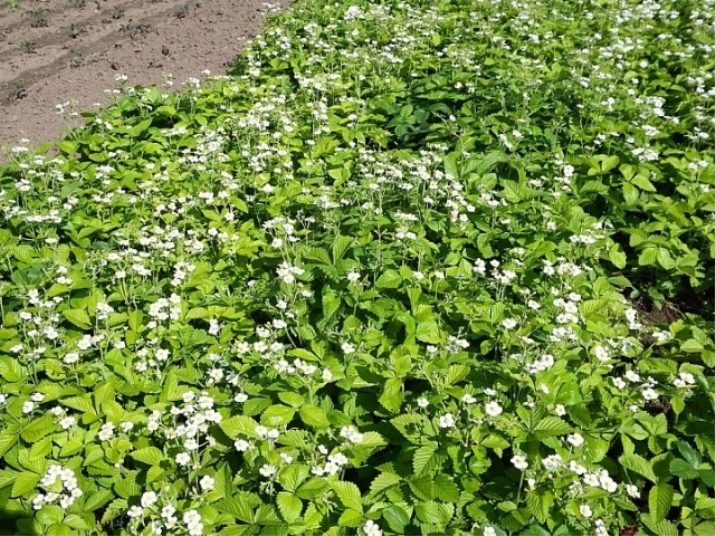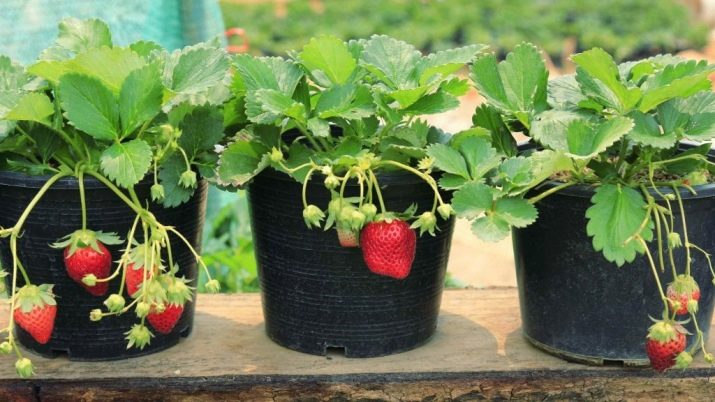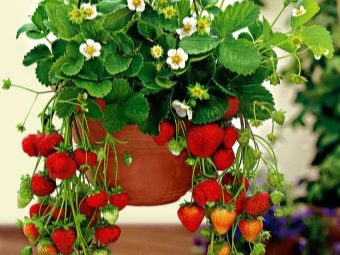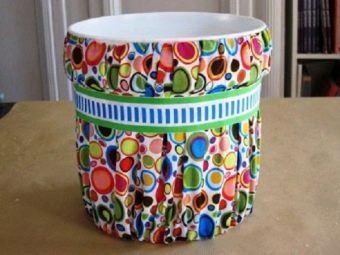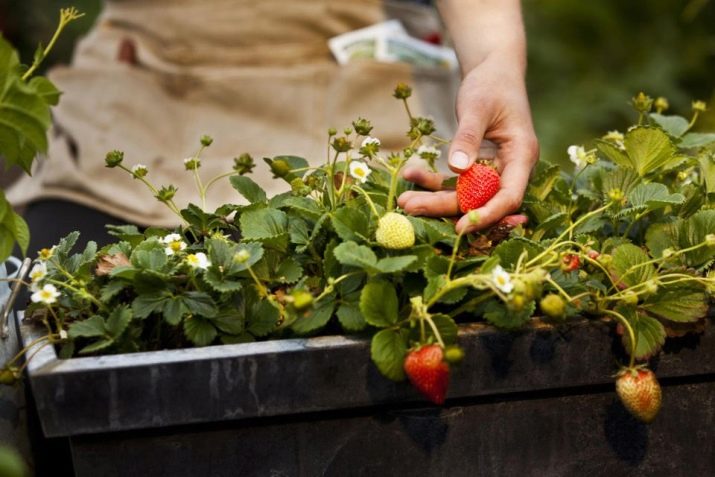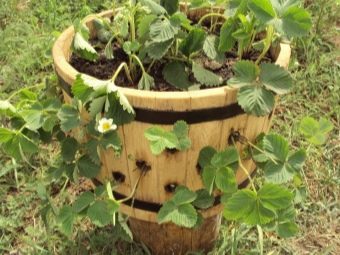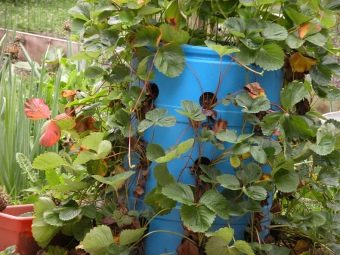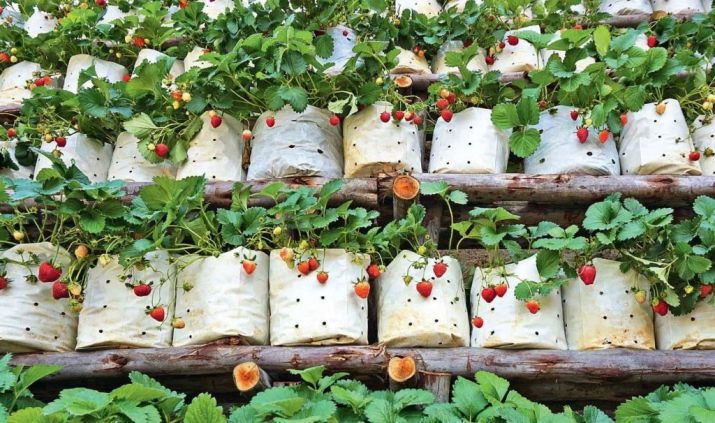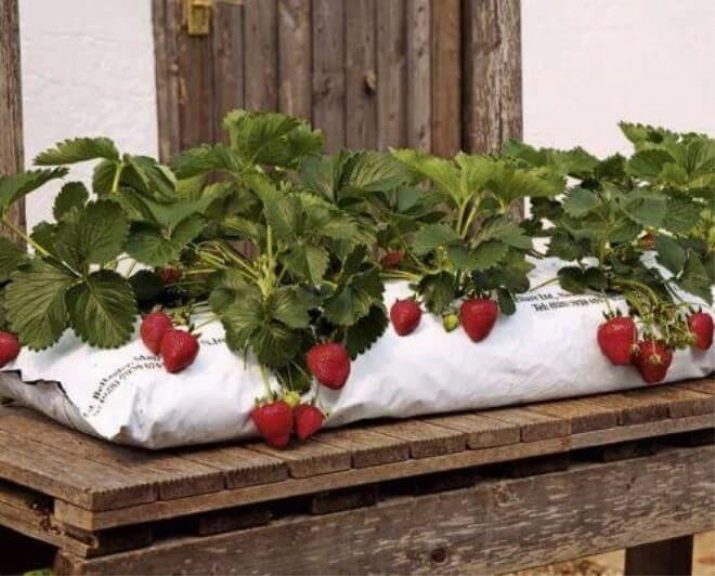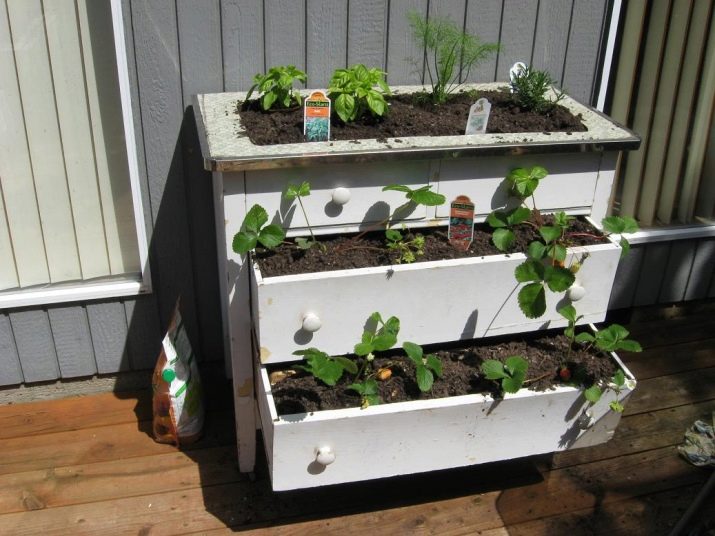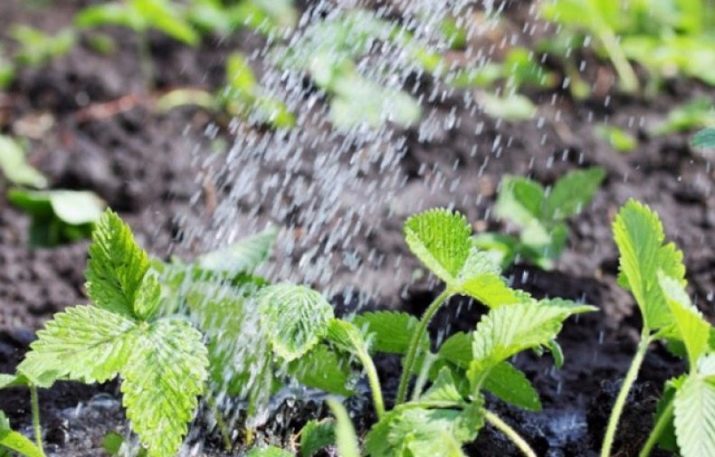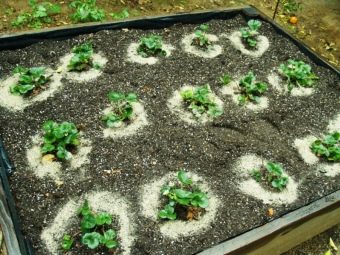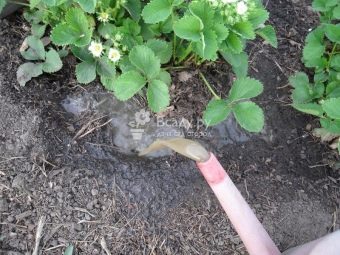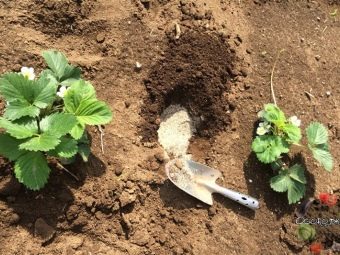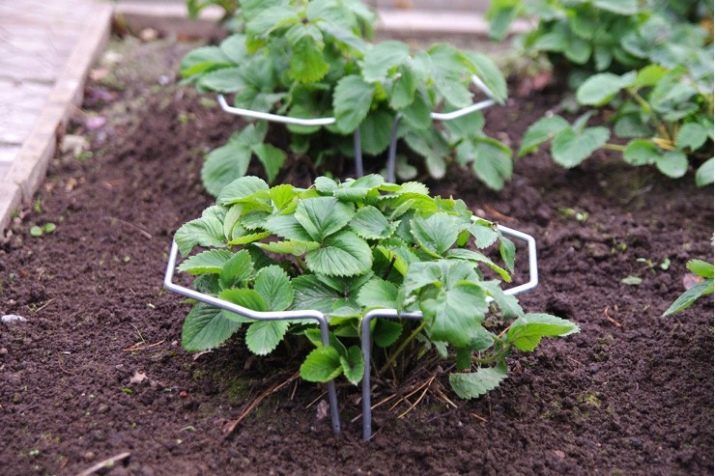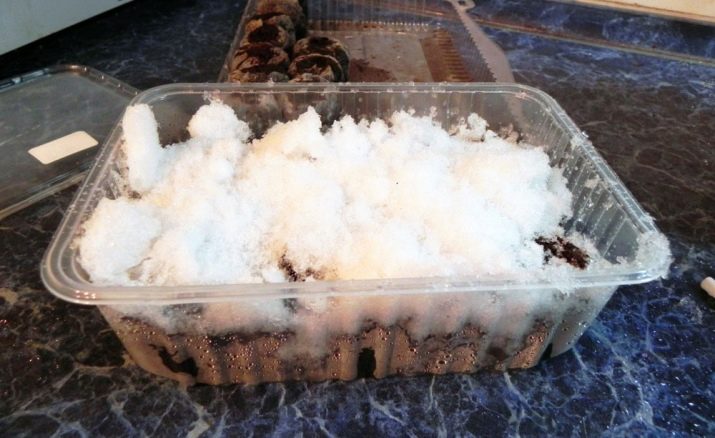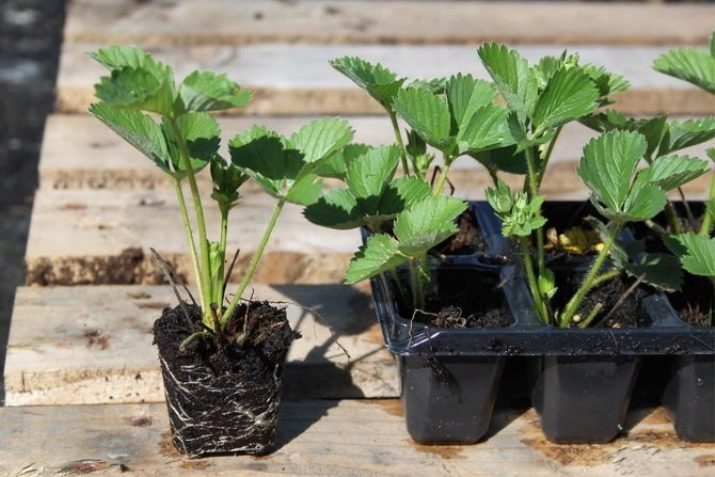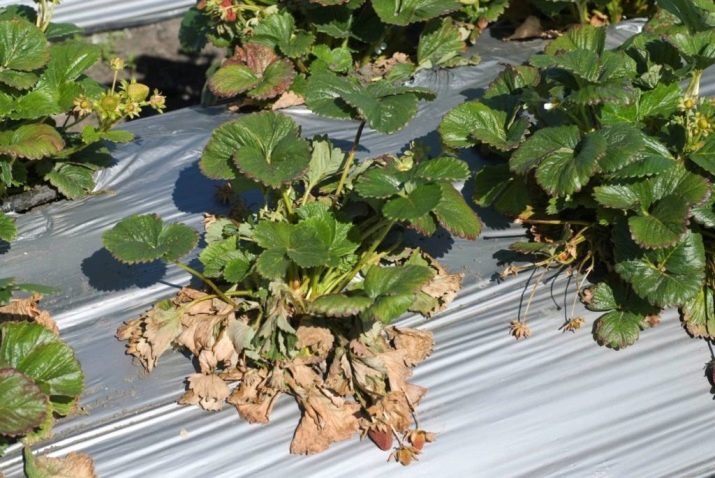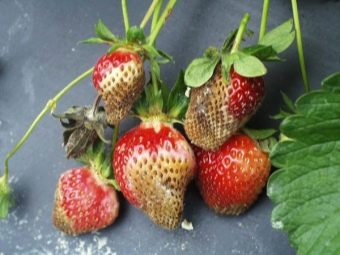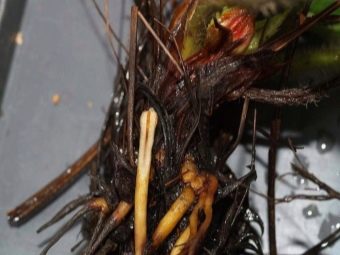How to grow strawberries?
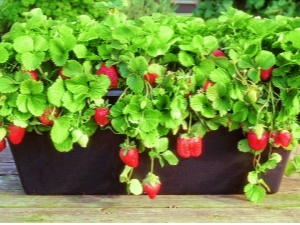
Gardening is a very exciting activity, but it requires great care and considerable knowledge.Such a perennial plant, like strawberry, gives a decent harvest only with adequate care. Careful observance of agrotechnical norms allows to exclude many adverse events.
Landing time
The planting of strawberries in August or autumn gives people many advantages, the main of which is that a phenomenal harvest is achieved in the first year of cultivation. But the spring landing does not allow to achieve this effect.
Since the plant loves warmth, it is best to focus on the period from half of August to half of September. Even in the suburbs, the end of the first autumn month begins with a strip of frost. They deprive young saplings of a chance to settle down and get comfortable. But precipitation is welcome, as this fact contributes to the rooting of plant growth.
Siberian gardeners mostly plant strawberries in July. But the most cautious farmers prefer early spring and even then use a heat retaining film.
Regardless of the specific region, agronomists advise not to disembark the landing 30 days before the onset of cold weather. This principle allows to provide attractive results even in the Urals, including its northern part. For the middle band under the condition of normal weather, landing in a free land is permissible. But Siberian gardeners should definitely use the film. Agrarian fiber can also be a good alternative.
A slightly different approach is used when strawberries are grown with a mustache. To plant such seedlings in the garden should be 10 days earlier than the general term. It is necessary that the bush and root complex is fully formed. Still required to focus on temperature conditions.
The recommended level is to warm the air by day to 10–20, and in the dark at least to 5 degrees.
Its requirements for landing times are typical for the Leningrad Region and its neighboring regions. Since this is still the northern areas, you can rely on the recommendations for the Ural agricultural region. Practice for many years has confidently proved that with good snow cover, even severe cold will not disturb the integrity of the autumn plantings. Some problems may arise when growing strawberries in the Irkutsk region.
Very tough East Siberian winters bring a lot of inconvenience to farmers. If you plant in the spring, you need to meet the corridor from the last days of April until May 20. Autumn planting bears this name only conditionally, because it actually falls on the last part of July - the first 10 days of August. Such moments are most favorable for fastening plants. If you plant them sooner or later, the landings are likely to die from adverse conditions.
Preparatory stage
The soil
Land preparation for planting strawberries unfolds immediately after the snow melts. The fact is that this plant is distinguished by its earlier growing season than other berry crops grown in the garden. First of all, it is necessary to free the ridges from dry foliage and weeds, to remove the bushes frozen in winter - they will still be useless for harvest and will become a constant source of infection and a refuge for pests. If in the autumn mulch was laid out, then you need to remove the top 30 mm.
This requirement is associated with the need to accelerate the heating of the roots by sunlight. Also, this technique allows you to neutralize parasites that could populate the material laid out.
For your information: if the condition of the mulch is satisfactory, then we can restrict ourselves to loosening to a depth of 70 mm.
Additionally sprinkle the ridges with sawdust, crushed with straw or pine needles of pine trees. In addition, to prepare the ground - it also means to feed it with nitrogen mixtures for the future holes themselves and in the rows.
The presence of aggressive weeds in the ground is unacceptable. The selected area should have deep groundwater (at least 1 m to the surface).It is worth avoiding planting strawberries in the lowlands, because cold air gathers there late at night and early in the morning. But the slopes of the high steepness are not suitable, because in the winter months snow will be blown away from them, and there is a risk to freeze the plants, to expose the roots.
Recommended soils with weak acidity, loam and land with a significant proportion of sand.
Choosing weeds, just throw them unreasonable. This green mass is still useful to obtain compost earth. To get rid of all kinds of larvae and fungal spores, apply ammonia water. Instead, you can spray the soil with a universal composition "Roundup". Digging the ground for strawberries carried out in advance, it is fully justified planting sideratov, which should grow to 100-150 mm.
Planting material
The selection of strawberry seedlings is very large, but do not assume that all of them are the same. A good shrub should be thoroughly developed and have from 3 to 7 leaves. The very foliage of such seedlings is brightly colored, does not have the slightest trace of plaque or defect. It is necessary to abandon the purchase of plants in which the surface is covered with wrinkles or stains. For high-quality seedlings peculiar not too high, but well-developed outlet.
Characterized by a large average kidney. The root is a solid lobe of a light color, around which are wound processes 70-80 mm long. If the root complex is dark, then we can confidently say that the bush is sick. The minimum external cross-section of the neck of the root should be 0.7 cm. When this indicator is 2 cm or more, fruiting will begin directly in the planting season.
The best seedlings, which are guaranteed to be ready for planting, may even bloom. In this case, you need to see what the size of the flower is: the larger it is, the greater will be the berries.
It is strictly impossible to plant seedlings, flowers on which are small or do not contain buds. Such plants will not yield any crop, regardless of the efforts of gardeners.
Allowed and planting strawberries independently harvested seeds. With suitable berries cut the top. Then you need to carefully remove the outer layer containing the seeds. The skin is spread on a thick cloth or sheet of paper, and then dried for 2-3 days. Dried material gently knead hands, separating the seeds. The collected seed is transferred to the package and signed.
Before planting, it must be soaked and stratified. Soaking is performed on cotton wool disks laid out on a saucer and moistened with warm water. In this water, add the accelerator of growth, which, according to the gardeners themselves, is most suitable.
A lightened way of stratification is also possible: when the seeds are spread on wet cotton swabs, covering them with identical tampons from above. This “layer cake” should be put in the lower compartment of the refrigerator for 72 hours, setting the temperature from 4 to 6 degrees Celsius.
How to plant?
When planting seedlings on the site can not use any fertilizer - the land is fueled by useful components in advance. The planted whiskers close, creating a shadow. If this rule is violated, the seedlings can wither, because the roots are still not able to compensate for the loss of fluid for evaporation.
Do not be much afraid of such a development. If the seedlings did not die, then the very first cool evening will allow it to come to life. It is necessary to plant strawberries where there is a sufficient amount of light, but at the same time a small shadow is provided. For example, the backlighting scattered with the crown of trees is quite harmonious for this plant. It is worth avoiding a dense dense shadow - in it it is possible to receive only small berries or to lose a crop at all.
It is advisable to change the landing sites every 4 years.
Optimal strawberry precursors both in open field and in greenhouses:
- radish;
- all types of cabbage;
- dill;
- beet;
- radish;
- marigold;
- legumes;
- basil;
- garlic;
- bulb flowers;
- parsley or salad.
It is necessary to choose the scheme of planting strawberry bushes as carefully as possible, including because there are a large number of them. The best results are achieved through the use of double rows, in which the distance between the bushes is small, and the row spacing is large. Increasing the landing density within certain limits increases the yield. Often used construction 200h200h600 mm. The first two figures show the distance between the rows and within the row between the bushes, and the last one shows the gap between the two rows.
Sealing between rows is not required, but it is advisable to thin out the strawberry planting when the crop is harvested. The procedure is that the bushes through one dig and transplanted to a separate garden bed. There they are distributed according to the rule 400x400x600 mm. The fact is that fruit bearing plants may suffer from excessive compaction.
If early varieties of strawberries are planted on the plot, a system of 300x300x600 mm is recommended. This allows you to achieve increased fertility from the capricious culture. It is important to know: when planting different varieties, it is necessary to increase the gap in the pair of rows to 800 mm. In this case, the entanglement of the whiskers and the problems associated with it are excluded. Mid-season and late-yielding varieties with developed rosettes should be planted on the basis of 400x400x700 mm.
Such an order gives especially good results on black soil saturated with useful substances. Regardless of the schemes, you need to plant strawberries in the evening or in cloudy weather. Planted in the heat of the sun plants suffer from excessive rate of evaporation of water.
At the time of disembarkation of flowering strawberries need to get rid of the peduncles, so that the bushes soon took root. If planting is carried out directly in the ground, then at this moment it is unacceptable to introduce fertilizer.
Be sure to thoroughly straighten the roots at the time of disembarkation. With a large length (from 70 mm), trimming is performed, but at least 50 mm must be left. Then pour a low hill over which the roots are evenly distributed. After that sprinkle the planting with wet earth and water it abundantly. Sometimes they simply spill the wells for disembarkation and sprinkle them - in this case additional watering is not required.
When using a special material for sheltering the beds, it is laid out in the form of a monolithic layer, the width of which should be 100-120 cm. The cloth is fixed at the edges. For his retention apply:
- bricks;
- boards;
- soil powder.
In those places where the holes should be located, round cuts are made on the surface. Their size is selected according to the scale of the root complex of the plant. Sometimes the slots are shaped like a cross. Such notches should be larger than usual in order to be able to bend inwards without disturbing the smooth edge. The bed should be high and have a small slope.
This property allows moisture to flow off and fall on the edges. Covering the dark covering material allows you to warm the ground faster. It is important to know that in southern areas it is advisable to use white colored agrarian fiber, as it effectively copes with overheating. On the sheltered ground, gray rot and the development of weeds are almost impossible.
But the problem is that similar methods of strawberry cultivation require the installation of a special irrigation system. Fully justified this technique in large farms and agricultural holdings. Watering at the root is very difficult because of the small size of the slots. In this case, both root rot and overdrying are likely.
Weeds that have been growing for many years are capable of crushing strawberries, and therefore, before planting it under cover, all traces of such herbs must be destroyed.
There are 4 ways to cultivate strawberries that are best suited for work. Planting single bushes implies a distance between the sockets of 0.45-0.6 m. You can eliminate the interweaving of bushes, if you systematically get rid of the whiskers. Then the plants will be able to fully develop and give a lot of fruit. However, this method has several weak points:
- labor intensity;
- the need for weed control;
- the need for systematic loosening of the earth;
- mandatory use of mulch.
The fruits will be large, the bushes will be a little. All plants are effectively ventilated, the danger of rotting is reduced many times. Less planting material consumed. In another embodiment, landing in rows is practiced. It implies a distance between bushes in one band of 150-200 mm.
The row spacing should be 400 mm wide - it is this size that allows free access to the plants and, at the same time, uses the space more efficiently. The main problems of this method of cultivation are similar to the cultivation of individual bushes. Be sure to have to loosen the ground, get rid of weeds and mustache. Strawberries in rows grow very actively and are able to live 5-6 years on the same bed.
The nesting method is that some plant becomes central, and 6 others are planted around it. A hexagon is formed, the distance between the links of which is 50-80 mm. The distance between the individual sockets in the row should be 250-300 mm. The aisle make the size of 350-400 mm. The need for a significant amount of planting material can hardly be considered a disadvantage, because it is justified by a high yield.
If planting strawberries should be very cheap, then you need to choose a carpet option. When choosing it, do not tear the mustache, allowing the plant to spread throughout the intended area. Seal arrangement bushes allows you to create a nonstandard microclimate at the surface. Additionally, a layer of mulch is formed without additional effort.
Carpet technique is comfortable for anyone who is rare at dachas, because the need for watering, fertilizing and loosening is reduced, but the berries can gradually be crushed.
It is not always required large garden berries. Often they try to even make it limited in size, especially growing in pots. Compared with the classical method, the pottery approach has a relatively short history, but its popularity is constantly growing. Mobile type of construction provides easy movement from one part of the garden to another or to the shelter. It is much more convenient to pick berries from a pot than from a bed.
Contact of the fruit with the ground is excluded, so they do not rot and remain clean, not covered with sand and dirt. If you grow remontant varieties in pots, you will be able to harvest all year round. The potting technique will also help to preserve free territory and increase the efficiency of land use. It is precisely the repair varieties in the pot that are grown most efficiently. They provide a solid crop and excellent aesthetic properties of plants.
It is advisable to choose varieties that in principle are not capable of forming a mustache. Their plant strength is fully focused on the ripening of fruits. It should be borne in mind that the choice is not only the plant itself, but also the capacity for it. The appearance of its special value does not matter, because all the same, the pot is almost completely masked by berries and leaves. You can choose:
- pots;
- the simplest containers for flowers;
- elongated plastic containers.
Some farmers even use self-made tanks. Make them from mayonnaise buckets or from cut containers of water. For decorating self-made pots use:
- paints and varnishes;
- stones;
- beads;
- seashells.
It is categorically unacceptable to use pots made of coconut fibers for strawberries.
The size of the tank can be varied - it is selected according to the number of bushes that need to be planted. In the bottom of the prepared tank holes are made for drainage.It is useful to prepare a drainage layer formed from expanded clay or brick fragments. When growing strawberries in a pot, it is very important to take care of the nutritional value of the soil and its saturation with additional substances.
Feeding the plant mass is poured over the drainage layer. Periodically, planting in pots is fed with mineral components. Growing seeds there is much more difficult than seedlings.
It must be remembered that carrying pots to the street is required when the air is heated at night to at least 0 degrees. Even small frosts affect the plants detrimental.
Strawberries in the pot do not weed or loosen, but watering should be organized very carefully. It is made systematically as soon as the earth dries. Since the enclosed space contributes to rotting of the roots, only a small amount of water should be consumed. The simplest method of irrigation is to place the pot for 120-180 minutes in a tank filled with water. Then the required volume of water will flow through the drainage channels.
Growing strawberries on the street can be in a barrel. This solution allows you to get a lot more opportunities for design work. It is important to know: it is unacceptable to use tanks where synthetic substances, fuel or lubricant were stored. In the barrel is best to use repair strawberries. Judging by the experience of gardeners, you can apply:
- "Forest Fairy Tale";
- "Moscow delicacy";
- "Diamond";
- Alexandria;
- "Albion".
Strawberries are often grown in bags. For this purpose it is not bad to use the Marshall variety, which is resistant to weeds and dry periods. Albion tolerates not only cold, but also the effects of diseases. According to the characteristics close to him "Honey". Growing "Geneva", you can collect for the season up to 3 kg of fruit.
In most cases, the bags are placed in the greenhouse, or rather, hung there. For hanging need trellis or hooks. In any case, you need to carefully select a place to install the bag according to temperature and light level. Lightweight, low-acid soil, capable of holding water and air for a long time, is put into the bags.
It is best to grow strawberries in this way in the humus mixed with sand, in turf or sand. Claydite is poured from below, which acts as a drainage. Growing different varieties on the same bed is quite possible.
The opinion that this will lead to the mixing of varieties or even to the degradation of the culture is not justified by anything. Professional breeders unambiguously agree that such a development is impossible.
Strawberry in reality is an overgrown receptacle. Such a fruit will retain its basic qualities in any case. The difference can only affect the seeds, but the taste and appearance of strawberries does not depend on them. Moreover, careful selection of varieties for cross-pollination allows even increasing the number of fruits and improving their characteristics. But it is important to look carefully so that the mustache does not get confused, because then it will be hard to sort out the harvest.
At the cottage you can grow strawberries in boxes. This technique is positive in that it:
- provides mobility landings;
- helps to pick berries more comfortable;
- keeps plants inaccessible to slug and bear.
But in the box, the amount of land is small, so you have to thoroughly prepare the soil mixture and feed the plants. Success is achieved when using tanks, even from foam.
Some farmers can get a good harvest and even in the pull-out drawers, borrowed from old dressers. As a drainage material used expanded clay and peat from the lowlands.
How to care?
Watering
Water the bushes is necessary. Caring for strawberries during cultivation implies watering only with warm water, because under the action of cold water the culture is suppressed. It is not recommended to use this effect to inhibit development. The fact is that the risk of root freezing is great.It is possible to grow an injured plant, but to get a good harvest will not work.
If cold precipitations fall out, it is required to compensate their action with an additional portion of warm water. For the strawberry to quickly take root, for the first 14 days it is watered after a day, adding 10 liters of liquid per 1 square meter. m
It is possible to determine the required amount as clearly as possible by introducing a steel pin about 0.2 m into the water before irrigation. If the soil is stuck to the steel throughout the segment, it is permissible to reduce the intensity of watering.
Top dressing
Even with the use of Dutch technology agriotechnology, it is imperative to do top dressing so that any part of the crop is sweet. The initial recharge is done immediately after the snow melts and the surface of the earth dries. Then nitrogen is introduced into the earth, which helps restore the strength of the plant and strengthen its health.
The optimal type of nitrogenous feed is rotted manure from the barn. Bird species fertilizer can also be used, but with great care.
The second time, fertilizers are used when the buds are folded, but the flowering has not yet begun, because it is then that the bushes lose a lot of energy. It is required to use potash fertilizers, the choice of which is huge. As soon as the flowering begins and the ovary appears, it is time to use boron - thanks to it there will be less empty flowers. According to the basic rules, boron mixtures are introduced through the leaves.
The next time fertilizers cottagers need to apply during fruiting, because it is then that the berries quickly get the desired condition. Pouring fruits are fed with dissolved cow manure. To the liquid add 2% wood ash (based on its volume). It is recommended to keep the solution for about 24 hours so that it has the best result.
For the fifth time, strawberries must be fed as soon as the harvest is made. The purpose of the mineral supplement is to plant the plants quickly in the next year, because then the flowering will be more abundant and more berries will be harvested. In the ground make dry mix. Of the natural formulations, wood ash best manifests itself.
Garter
Growing strawberries without a garter is quite difficult. The use of trellis and other supports significantly improves results. A prerequisite for success is a thorough preparation of land for disembarkation. Regardless of the specific substrate, it is necessary to add boric acid, vitriol, ferrous sulphate and the same zinc. Only young plants are raised, because adult bushes are unfit.
It is necessary to rejuvenate landing on a trellis every year:
- autumn rosette rosette;
- spring raise a mustache;
- next autumn, they are cleaned again.
How to seat?
Seed material for seedlings are bought or collected independently. You can acquire it exclusively in specialized outlets. To use the seeds, take healthy and developed berries in small quantities.
The best option for the preparation of soil mixture - a combination of biological humus with sand and a top view of peat. The share of the last component has 3 parts, and the first take on 1 part.
Regardless of the soil mixture used, it must be decontaminated. The easiest way is to irrigate with 1% potassium permanganate solution. A longer way is that the mixture prepared in autumn is put outside for the winter. When disinfection is over, the seed substrate is saturated with beneficial microorganisms. They are sold in the form of finished products.
Hardening of seeds should be carried out for a maximum of 3 days, since exceeding this period leads to the death of the seed. Replace hardening can be stratification. This process can be carried out even in November-January. The procedure is carried out in the refrigerator.
Containers with seedlings should not be placed in drafts and in winter. To get rid of problems with the preparation and use of soil mixtures, you can use peat tablets.They usually make a complete set of necessary fertilizers. Inside the pill, the plant roots remain inviolable in almost all conditions.
Seedlings are picked at the formation of 3 or 4 thoroughly developed leaves. Immediately before moving the seedlings to the free land, it is required to be hardened. In the last 7 days, containers are carried into a room that is not heated. Begin this exposure from two hours a day, gradually bring the treatment to the clock. It is possible to transplant seedlings in the south in the second half of May, a little later it is time for this work in the northern regions.
Strawberries can be placed in free ground after the danger of frost has disappeared. Critical temperature - less than 12 degrees above zero. Care is the same as when growing seeds. But in addition to dressing, irrigation and garter need to deal with dangerous factors. The main place among them is occupied by harmful organisms.
Diseases and pests
Strawberries can wilt due to the defeat of a medvedka. The causes of this disease is water deficiency and verticillus. It is important to know that it’s not worth blaming moles for root eating, because these underground inhabitants are 100% predators and don’t even pay attention to plants. If the foliage dries up, you can suspect the defeat of gray rot or powdery mildew.
Curled and curly leaves appear when the following factors appear:
- powdery mildew exposure;
- small amount of water;
- spider mite or aphid aggression;
- excessive use of synthetic agents for processing.
The causative agent of verticillosis is able to maintain vitality in the earth for several years in a row. An additional source of infection is any weed or even just a vegetable. You can reduce the risk of infection by strictly performing a crop rotation and carefully choosing varieties. All diseased bushes must be destroyed. It is also important to carefully evaluate the quality of planting materials.
Strawberry late blight is highly contagious and in the absence of adequate measures it can beat up to 100% of the plants. As in the previous case, it is very important to eliminate diseased bushes and vegetation remnants. Diseased planting process Bordeaux liquid and copper preparations. The most common disease of strawberries is gray rot. It can be transmitted through all plant structures.
To avoid the disease and cope with it, you need:
- the location of landings on carefully ventilated places;
- selection of immune varieties;
- weeding diseased landings;
- elimination of saturation with nitrogenous substances;
- treatment of beds with special preparations.
To prevent strawberries from pecking, they are covered with special metal or plastic nets. The barrier is mounted immediately when a pinkish color appears on individual berries. The use of pendant compact discs, scarecrows and noise protectors almost does not work.
Minor trenches along the perimeter help to stop the slugs, where they fall asleep:
- tobacco;
- ground pepper;
- lime;
- wood ash.
How to grow garden strawberries from seed, see in the video.

